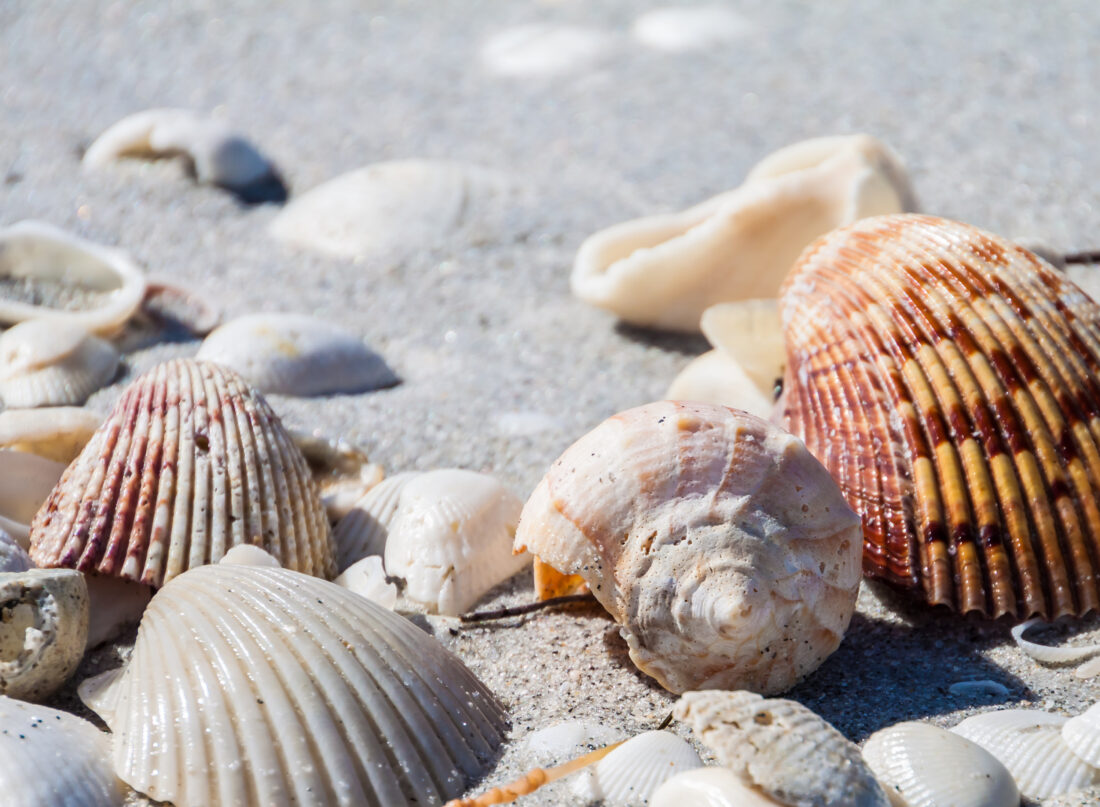Maybe it’s a crab. Too far to tell. Get closer. A shell? Maybe a bone. You bend down to pick the object up, and the sand exfoliates your fingertips as you turn it over and over again in your hand. You pocket the treasure and continue on, eyes scanning the beach for your next quarry. But should you keep what you’ve found?

As exciting (and addictive) as beachcombing for Scotch bonnets, shark teeth, or fossils can be, knowing what you can take home from your hunt is just as important as lathering on your sunscreen. Most things are fair game, says Erin Fougeres of the National Oceanic and Atmospheric Administration (NOAA). But “if you come across a part of any marine mammal on the beach, whether it’s endangered or not, you’re required under the beachcomber provision to register it,” she says, referring to the federal Marine Mammal Protection Act. A bone from a dolphin or whale, say. Fougeres, the marine mammal stranding program administrator for NOAA’s Southeast region, helps beachgoers do just that.
“There are people who have sometimes come across something that they’ve had for years and hadn’t realized they were supposed to register it,” Fougeres says. “We do get contacted like, ‘Oh, I found this thing like five years ago, and it’s been sitting on my shelf, and I just heard I was supposed to do something about it.’ And they don’t get in trouble. It’s not like we’re going to, you know, send the police or anything.”
Keeping track of marine mammal parts helps organizations like NOAA understand factors such as population health and mortality rates. Fougeres also warns never to take any objects that still have soft tissue attached or living organisms (like hermit crabs) inside. And not surprisingly, parts of any endangered species are strictly verboten. “A lot of times, people don’t know that it’s an endangered species at first,” Fougeres says, “so they find a bone on the beach, and they reach out to me to register it in the Southeast or to learn more about it.” In that case, NOAA has to retain the object, though they do return anything else once it’s registered.
Otherwise, for more common objects such as shells or shark teeth, check first the rules of the specific beach you’re visiting. “We highly recommend folks do as much research as they can about a beach location before they actually go,” says Erin Weeks, the media coordinator at the South Carolina Department of Natural Resources (SCDNR). On most municipal beaches, “It’s totally appropriate to take shells and sharks’ teeth and other goodies that you find on the beach.” But other locations, she says, including heritage preserves such as the popular Botany Bay on Edisto Island, South Carolina, prohibit the removal of anything from their sands. “One of the reasons people love visiting Botany Bay’s beach so much is because it is absolutely loaded with shells,” Weeks says. “I don’t want to discourage people from [beachcombing], but, like any human activity, we can have an impact on the environment.”
As far as public beaches go, Weeks advises simply practicing proper etiquette. “It’s just important to be aware that there’s wildlife that we have to share the beach with,” she says. “We’re out there enjoying ourselves. We go to the beach as a place of rest and refuge and to make memories with our family. But having access to undisturbed beaches is a matter of survival for these animals. So, we have to be respectful of them.”
That includes avoiding single-use plastic, keeping dogs on leashes, admiring wildlife solely from a distance, and leaving the beach the way you found it—or better, by removing any trash you come across. But even Weeks can’t resist the thrill of the hunt. “That’s kind of the fun and magic of the beach,” she says. “Every day, or with every new tide, there’s new things that wash ashore, and you never know what it’s going to bring.”








